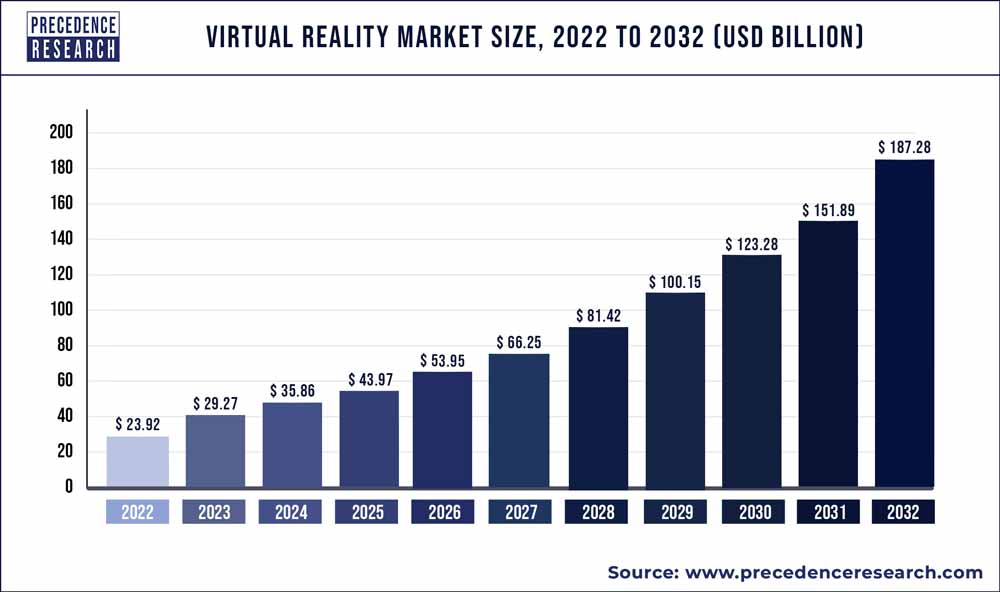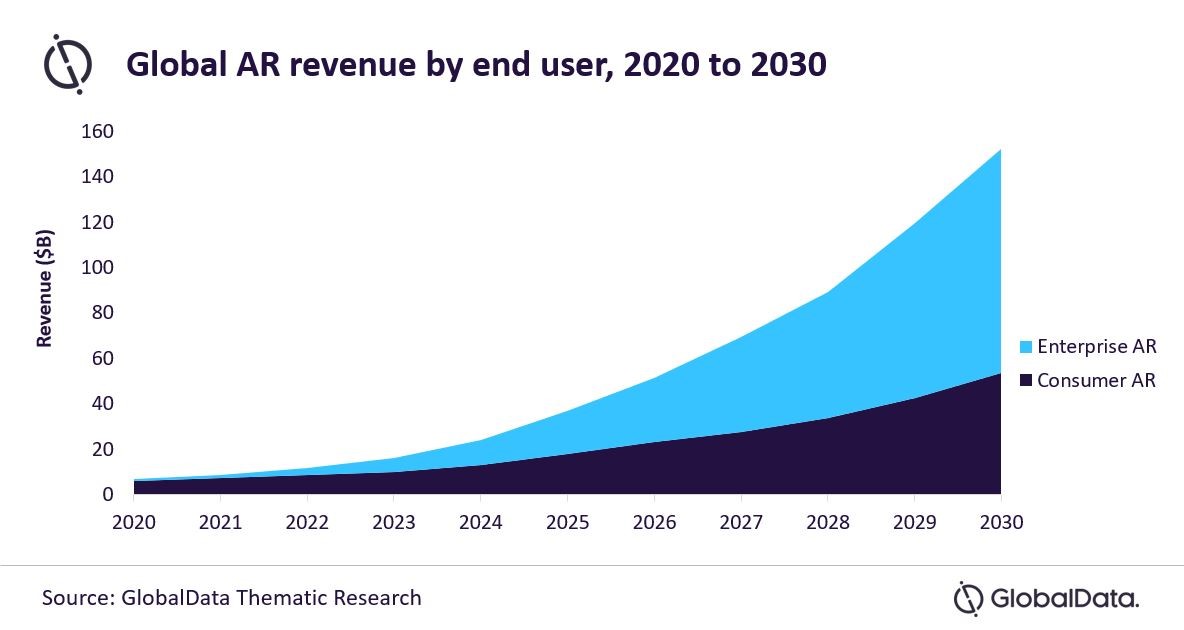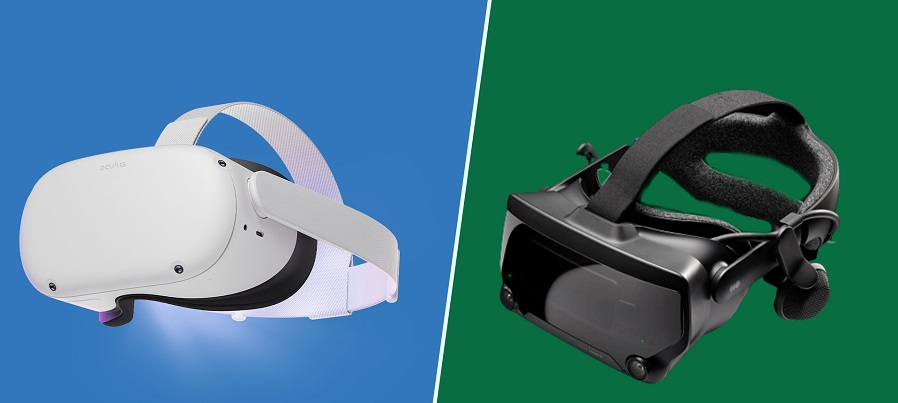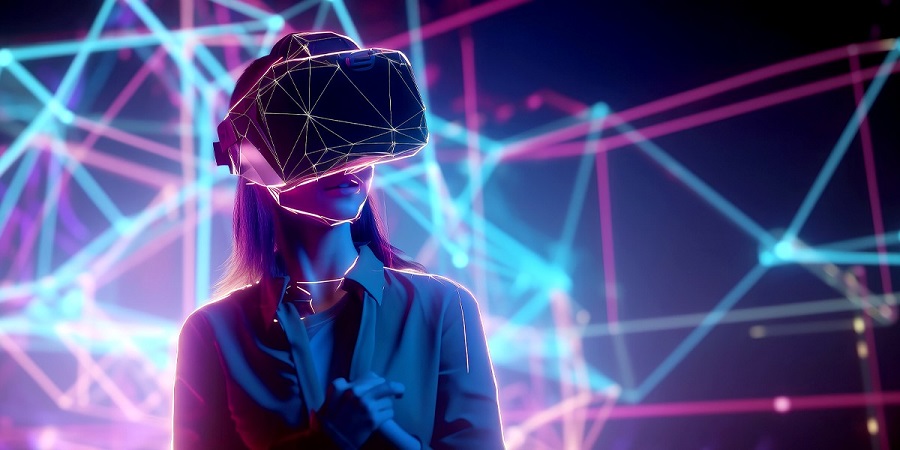Augmented Reality (AR) and Virtual Reality (VR) have left an indelible mark on the global stage, capturing the imagination of smartphone users and industry leaders alike. This transformative journey has not only touched the hearts of consumers but has also spurred entrepreneurs and marketers to delve into the exciting realm of AR and VR app development.
The State of VR Market
As of 2023, the virtual reality (VR) market showcased a valuation of USD 19.44 billion, marking the beginning of a remarkable growth trajectory. Projections indicate a substantial surge, with an anticipated value soaring to an impressive USD 165.91 billion by 2030, demonstrating an extraordinary Compound Annual Growth Rate (CAGR) of 31.0% from 2023 to 20301. Let’s explore some distinctive insights that offer a nuanced perspective on the dynamic VR market:
Within the broader spectrum of extended reality (XR), encompassing virtual reality (VR), augmented reality (AR), and mixed reality (MR), the collective market commands a significant value of approximately $27.96 billion. Notably, VR products carve out a substantial share, contributing $21.83 billion to this expansive total2. The market’s resilience is evident through a robust annual growth rate of 15%, a trend that industry experts foresee accelerating further. Optimistic projections envision propelling the entire XR market to an astounding value of $250 billion by 2028.
In the global VR landscape, the United States emerges as a powerhouse, boasting a market valuation of $4.6 billion. Positioned as a key player, the US stands at the forefront with influential developers, manufacturers, and an extensive consumer base. Forecasts depict a promising future with a projected 14.4% Compound Annual Growth Rate (CAGR) for the American VR market throughout the remainder of this decade. Meanwhile, across the Atlantic, Europe’s combined VR and AR markets hold a substantial value of $2.8 billion, contributing to the intricate tapestry of the global VR scenario.

Impact of AR and VR in Daily Life
Immersive technologies, such as AR and VR, have seamlessly integrated into our daily lives, spanning entertainment to commercial applications. The COVID-19 pandemic has accelerated their adoption, as enterprises pivot towards remote work setups. AR and VR technologies have proven invaluable in creating simulated settings that enable individuals and organizations to work, socialize, and engage with unprecedented flexibility.
Challenges on the Horizon
As AR and VR technologies advance, it becomes imperative for industry leaders to navigate potential challenges. Legal and moral considerations, data security, and long-term health impacts such as motion sickness, eye health, and psychological consequences loom as crucial hurdles. An ethical and socially conscious approach is essential in steering the course of these immersive technologies.
Virtual Reality Statistics in 2023
Delving into the statistical landscape, 2022 witnessed VR users surpassing 171 million, with over 10.8 million VR devices sold. The global market size is expected to soar to $252 billion, marking a tenfold growth from 2021. Additionally, an estimated 23 million jobs are anticipated to rely on VR, while consumer spending on AR/VR is projected to reach $72 billion by 2024.

Augmented Reality’s Soaring Value
Reports predicts that the Augmented Reality market will leap to $60 billion in 2023, propelled by advances in user-device interaction. The global AR market is forecasted to reach $100 billion by 2024 and an astonishing $332.60 billion by 2028, according to analysis by Emergen Research.
The Metaverse
As technologists envision the future, the concept of Web 3.0 and the Metaverse emerges. The immersive virtual environment where socializing, shopping, playing, and working seamlessly converge is a compelling vision. The VR headset currently stands as the most viable entry point into this evolving online universe, with tech companies laying foundational blocks for a future transformation.
Haptic Feedback and Sensory Immersion
The integration of haptic feedback technology is revolutionizing AR and VR experiences, providing users with a tangible sense of touch and immersion. Advanced haptic devices, including gloves and vests, facilitate a more profound connection with virtual environments. From training simulations to healthcare applications, haptic feedback emerges as a powerful tool for engagement and learning, promising vast potential across various sectors.

Affordable Virtual Reality Models Shaping Consumer Interest
A plethora of VR models with diverse features are capturing consumer interest, offering alternatives to the dominant Oculus Quest 2. Options like HTC Vive XR Elite, Meta Quest Pro, HP Reverb G2, Valve Index Full VR Kit, PICO 4 VR Headset, Sony PlayStation VR, and PSVR 2 cater to a range of preferences, each bringing its unique set of features at varying price points.
The evolution of high-end virtual reality (VR) has experienced a measured pace in recent years, but signs of significant change are finally emerging. The much-anticipated Apple Vision Pro is currently available for pre-order, marking a notable stride in the high-end VR landscape. Additionally, there are speculations circulating about the potential unveiling of the Valve Index 2. In this context, we delve into the existing rumors surrounding the Valve Index 2, shedding light on what is currently known and expressing our aspirations for its features and capabilities.
Embarking on the Exploration of Virtual Reality’s Challenges
Social Isolation
Dive into the realm of Virtual Reality, and it’s akin to stepping into a secluded universe of your own. While the allure of this private experience is undeniable, the potential downside looms – a decrease in face-to-face interactions with real individuals. Envision a future where dinner tables echo with the debate, “VR or not VR?” We, as inherently social beings, thrive on genuine connections. Instead of allowing VR to replace our social lives, let’s ensure it enhances them, prompting us to emerge from our virtual havens and engage with our fellow humans.
Psychological Impact
The intricate landscape of Virtual Reality has the potential to play tricks on our minds. Some individuals may grapple with discerning between virtual experiences and reality, leading to a state of confusion or emotional distress. It’s akin to navigating a virtual version of the eternal question, “Is this the real life, or is this just fantasy?” Moreover, exposure to intense or violent VR content poses the risk of desensitization to real-world violence. To stay grounded, we must remember that reality is where our favorite snacks await us.
Privacy and Security Concerns
Venturing further into the VR realm, it becomes evident that it gathers a treasure trove of data – our movements, preferences, and even heart rates. While this information holds immense value for companies, it unfurls a tapestry of concerns regarding privacy and data security. The last thing we desire is for our VR adventures to fall into the wrong hands. As VR marches into mainstream adoption, the imperative arises to establish robust regulations and security measures. It’s a collective effort to keep potential VR hackers at bay, safeguarding our personal information.
Mindful Navigation of VR’s Potential Pitfalls
VR possesses the extraordinary capability to transport us to unimaginable places, yet its pitfalls beckon caution. To ensure a holistic experience, we must remain tethered to the real world. Nurturing our social relationships, prioritizing mental well-being, and balancing our virtual adventures with reality constitute the keys to sustaining an exciting and enriching virtual reality encounter. So, don your VR headsets, embark on thrilling adventures, but always remember to return to reality, if only for a moment.
As Virtual Reality industry anticipates rapid growth and widespread adoption, stakeholders must remain vigilant in addressing challenges and fostering responsible use. The landscape of AR and VR technologies promises a dynamic and transformative journey for both industry professionals and eager consumers, with the future unfolding through a lens of innovation and continuous evolution.


